CVT offers smoother drives and better fuel efficiency, while automatic provides a more tactile driving experience.
Principles of Operation
How CVT Works
Continuously Variable Transmission (CVT) is a type of transmission that can change through an infinite number of effective gear ratios between maximum and minimum values. This contrasts with other mechanical transmissions that offer a fixed number of gear ratios.
- Pulley System and Belt: The heart of the CVT is its pulley system. Unlike traditional gear systems, CVTs use two pulleys connected by a belt or chain that can vary their diameter. The changing of pulley diameters modifies the gear ratio.
- Gear Ratio Variation: In a CVT, the gear ratio changes continuously, ensuring optimal engine performance based on speed. When you step on the accelerator, the pulleys adjust to deliver maximum power.
- Benefits in Fuel Efficiency: One significant advantage of CVTs is the potential for improved fuel efficiency. Without fixed gears, the engine can operate at its most efficient RPM for a range of vehicle speeds.
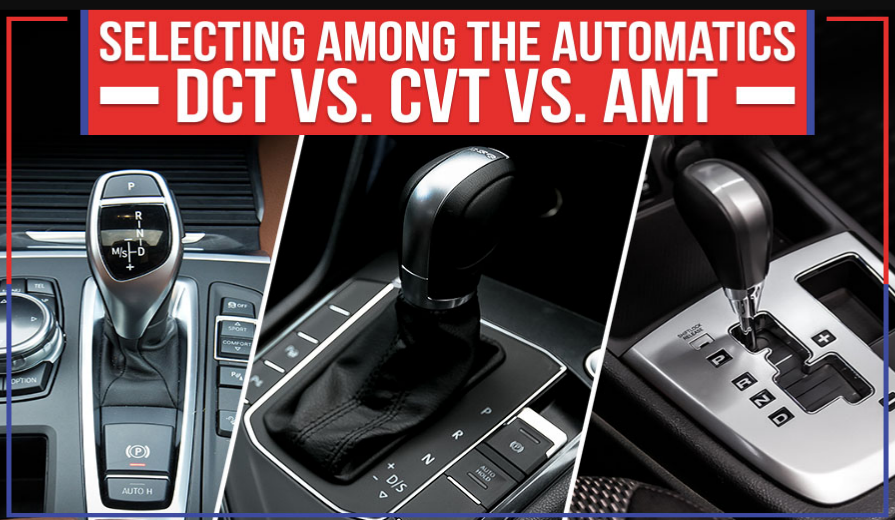
How Automatic Transmission Works
Automatic transmissions are a type of motor vehicle transmission that can automatically change gear ratios as the vehicle moves, freeing the driver from having to shift gears manually.
- Planetary Gearset: At its core, an automatic transmission relies on a planetary gearset to provide different gear ratios. This complex set of gears can produce various ratios without manually changing gears.
- Torque Converter: This replaces the clutch in a manual transmission. It uses hydraulic fluid to transfer power from the engine to the transmission and can multiply torque, providing an essential link between the engine and transmission.
- Shift Points: An automatic transmission knows when to shift based on various parameters like engine load, speed, and throttle position. The car’s computer determines these shift points, ensuring optimal vehicle performance.
Both CVT and automatic transmissions aim to make driving easier and more efficient, but they achieve it in different ways. By understanding the principles of operation, drivers can make informed decisions about which type of transmission suits their needs best.
Pros of CVT (Continuously Variable Transmission)
Fuel Efficiency
CVTs are often more fuel-efficient than their automatic or manual counterparts. The reason lies in their ability to continuously change gear ratios and keep the engine running within its most efficient RPM range. In contrast, conventional transmissions, whether manual or automatic, operate in set gear ratios. These fixed ratios can sometimes force the engine to work harder, especially during acceleration or when climbing hills, which consumes more fuel. CVTs, with their infinite gear ratios, can adjust instantly to provide the most efficient power delivery at all times.
Smooth Driving Experience
One of the standout features of a CVT is the absence of “shift shock.” This term refers to the noticeable sensation drivers feel when a conventional transmission shifts from one gear to the next. Because CVTs don’t have individual gears, the transition between power levels is smoother. Drivers often report that driving a car with a CVT feels more consistent, with no jerking or sudden changes in power delivery. This results in a more comfortable and seamless driving experience, especially during city driving or stop-and-go traffic situations.
Adaptability to Different Driving Conditions
CVTs can instantly adapt to various driving conditions. Whether climbing a steep hill, cruising on a highway, or navigating city streets, the CVT can adjust its gear ratio in real-time to provide optimal power or efficiency. This adaptability extends to various environments too. In regions with frequent elevation changes or varied terrains, vehicles equipped with CVTs can respond immediately to the driver’s demands. This continuous adaptability ensures that the engine always operates at peak efficiency, translating to improved vehicle performance and driver satisfaction.
In conclusion, the CVT offers a range of benefits over traditional transmissions. Its ability to provide seamless power delivery, adapt to varying conditions, and improve fuel efficiency are just a few of the reasons for its increasing popularity among modern vehicles.
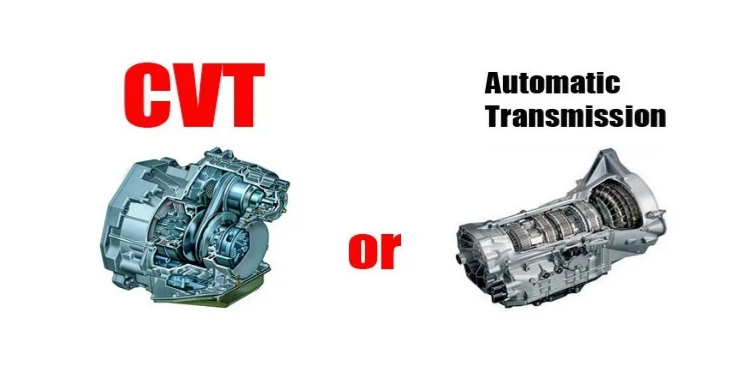
Cons of CVT
Durability Concerns
While CVTs provide an impressive array of benefits, there are concerns about their long-term durability. Traditional automatic and manual transmissions have been around for a much longer time, and their reliability metrics are well-documented. In comparison, some early CVT models faced issues related to premature wear and tear, especially when used in high-torque situations. It’s crucial for drivers to regularly maintain and check their CVT, ensuring that it functions correctly. Proper maintenance can help address potential problems before they become serious, but some users feel that the CVT might not match the lifespan of traditional transmissions.
Driving Feel and Responsiveness
For driving enthusiasts, CVT-equipped cars can sometimes offer a less engaging driving experience. The absence of tangible gear shifts and the constant RPM can make it feel less dynamic. While this smoothness is a boon for the average driver, those accustomed to feeling the car shift might miss that tactile feedback. Moreover, in some cases, there’s a slight delay in power delivery when accelerating from a standstill, known as “rubber band effect” in automotive circles. This delay can detract from the direct responsiveness that many drivers seek, especially in sporty or performance-focused vehicles.
Cost of Repairs
If a CVT does face issues or requires repairs, the cost can be higher than that of fixing a conventional transmission. The specialized components and the technology behind CVT can lead to expensive replacement parts. Additionally, not all mechanics are trained in CVT repair, meaning that one might have to seek out a specialist or a dealership, which can further drive up costs. While regular maintenance can help mitigate these risks, the potential for high repair bills remains a consideration for prospective CVT vehicle owners.
To sum up, while CVTs bring to the table a set of advantages that appeal to many drivers, it’s also essential to consider these potential downsides. As with any vehicle component, understanding the limitations and staying informed will help car owners make the best decisions for their needs and preferences.
Advantages of Automatic Transmissions
Established Reputation and Reliability
Automatic transmissions have been a staple in the automotive industry for many decades. Over this time, they’ve garnered a reputation for reliability and consistency. Manufacturers have had years to refine and perfect the technology, resulting in transmissions that can often last the lifespan of the vehicle with proper care. This long-standing presence in the market has given car buyers confidence in their durability. Moreover, since these transmissions have been around for so long, there’s a vast amount of knowledge and data available. It’s easier for drivers to find resources and expert advice on automatic transmissions and their maintenance.
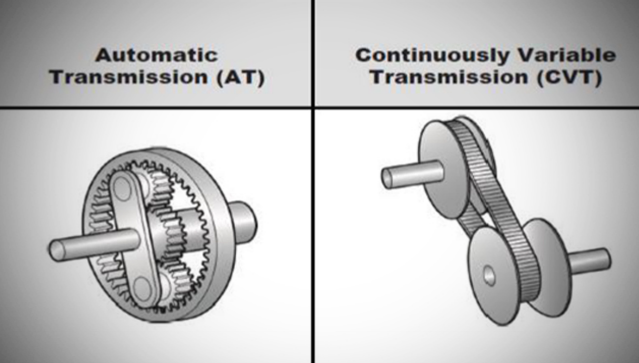
Predictable Driving Feel
For many drivers, the consistency and predictability of automatic transmissions are paramount. They provide a familiar driving experience with noticeable gear shifts, which some drivers prefer over the seamless range of CVTs. When you press the accelerator, you often know how the car will respond, and there’s a certain satisfaction in feeling the car shift gears as it accelerates. This predictability can make for a more intuitive and engaging driving experience, especially for those who have been driving automatics for years.
Wider Availability in Vehicles
Automatic transmissions are ubiquitous in the automotive world. Whether you’re looking at sedans, trucks, SUVs, or even some sports cars, you’ll find an option with an automatic transmission. This widespread adoption means that prospective car buyers have a broader range of choices available to them. Whether you’re looking for a budget-friendly commuter car or a high-end luxury vehicle, there’s likely an automatic transmission option available. Additionally, due to their popularity, mechanics everywhere are familiar with them, making service and repairs more accessible and often less expensive than newer transmission technologies.
In essence, while the automotive world continues to evolve, the traditional automatic transmission remains a tried and true option for many. Its predictability, wide availability, and the vast reservoir of trust it has built among drivers over the decades make it a top choice for many vehicle owners.
Drawbacks of Automatic Transmissions
Less Fuel-Efficient than Some CVTs
One of the main areas where automatic transmissions sometimes lag behind is in fuel efficiency, especially when compared to modern CVTs. CVTs can keep an engine operating within its optimal RPM range more effectively, allowing for better fuel economy. On the other hand, traditional automatics, with their fixed set of gears, can’t always match the precise power needs of the engine, leading to increased fuel consumption. While newer automatic transmission designs have become more efficient over the years, they often still don’t match the fuel efficiency levels of some CVTs in comparable driving conditions.
Potential for Abrupt Gear Changes
Automatic transmissions, especially older designs, can sometimes produce noticeable and abrupt gear shifts. This “shift shock” can be jarring for drivers and passengers, particularly in scenarios where quick acceleration or deceleration is needed. In contrast, CVTs offer a more seamless power delivery without distinct gear shifts, which many drivers find smoother and more pleasant for everyday driving.
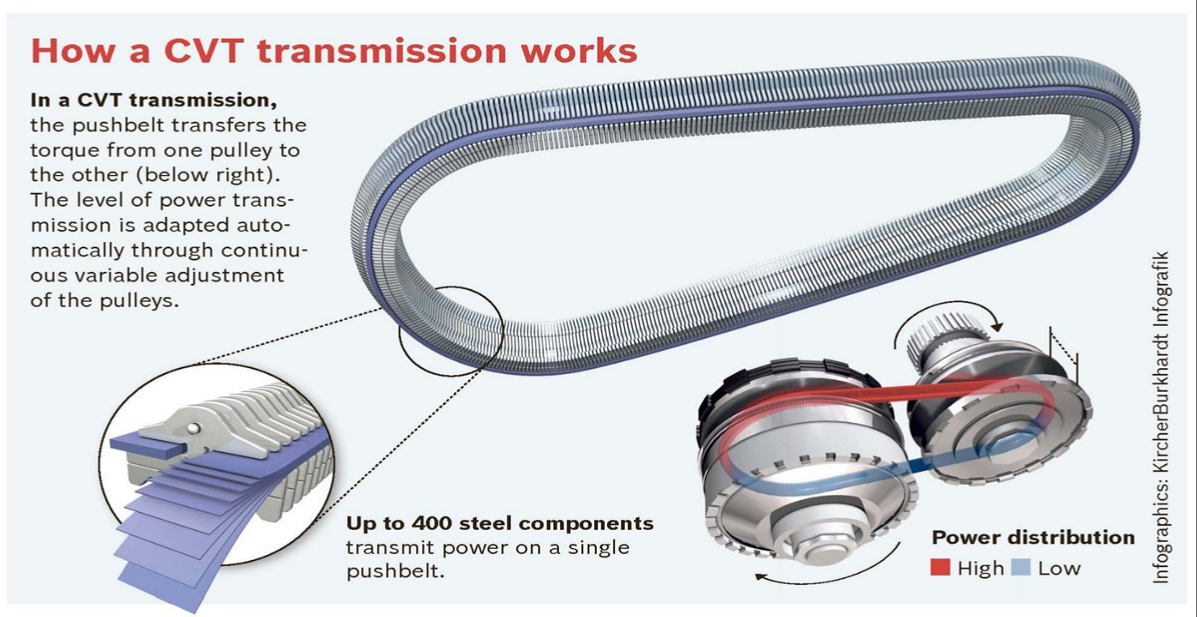
Complexity and Weight
Automatic transmissions are intricate pieces of machinery with a multitude of moving parts, including the planetary gearset, clutches, and bands. This complexity not only adds weight to the vehicle but can also make repairs more complicated and expensive when things go wrong. Additionally, the added weight can impact the vehicle’s overall efficiency and handling characteristics. While advancements in materials and design have reduced the weight and size of modern automatic transmissions, they can still be heftier than their manual or CVT counterparts.
In conclusion, while automatic transmissions offer a range of benefits that have made them a dominant choice in the automotive world, they are not without their drawbacks. As technology continues to evolve, it’s crucial for prospective car buyers to weigh these cons against the pros and determine the best fit for their driving needs and preferences.
Performance Comparison
When comparing the performance of CVTs and automatic transmissions, several factors come into play. Each transmission type has its strengths and weaknesses that can affect vehicle performance in various scenarios.
Acceleration and Speed
Automatic transmissions, especially those with multiple gears, can provide robust acceleration at low to mid-speeds. These transmissions can shift gears rapidly, offering a burst of speed with each shift. However, there might be slight delays between these shifts, leading to brief moments where acceleration plateaus.
On the other hand, CVTs offer a more consistent acceleration curve. Because they don’t shift gears in the traditional sense, there’s a continuous power delivery. This lack of “shift shock” can lead to a smoother acceleration experience, although it might feel less aggressive than a traditional automatic.
When it comes to top speed, the performance might vary based on the specific design of the transmission and the vehicle’s engine. Generally, both CVTs and automatic transmissions can handle high speeds, but the vehicle’s engine and aerodynamics play a more significant role in this aspect.
Towing Capacity
Traditional automatic transmissions have often been the choice for towing heavy loads. Their design allows them to handle the high torque demands of towing, especially when equipped with additional cooling systems. Automatics can also provide a predictable and steady power delivery, essential when pulling heavy trailers.
CVTs, while continually improving, have historically been less favored for heavy towing. The continuous power delivery can generate excessive heat, especially under the strain of a heavy load, which can lead to premature wear or damage. However, some modern CVTs are designed with towing in mind and come equipped with features to handle the added strain.
Off-Road Capabilities
Off-roading demands a lot from a transmission. The need for low-end torque, the ability to crawl over obstacles, and the capability to handle rapid changes in terrain are all essential. Traditional automatic transmissions, especially those in dedicated off-road vehicles, often come with features like low-range gearing to handle these challenges.
CVTs, due to their continuously variable nature, can adapt rapidly to changing conditions. Their ability to change gear ratios on-the-fly can be an advantage in varied terrain. However, durability concerns might arise when pushing a CVT to its limits in off-road scenarios.
In conclusion, the choice between a CVT and a traditional automatic often boils down to the specific needs and preferences of the driver. While both can excel in various scenarios, understanding the intricacies of their performance can help drivers choose the right transmission for their activities, whether it’s everyday commuting, towing heavy loads, or conquering off-road trails.
Economic Considerations
When deciding between CVTs and automatic transmissions, the performance isn’t the only factor to consider. Economic implications play a significant role in the decision-making process for many car buyers and owners. From the initial purchase price to long-term maintenance costs, understanding the financial aspects can be crucial.
Initial Cost and Availability
Automatic transmissions have been a staple in the automobile industry for decades. Their widespread use means that they are readily available in a variety of vehicle models and price points. Due to economies of scale and the mature nature of the technology, vehicles with automatic transmissions can often be priced competitively.
CVTs, while increasingly popular, are still not as ubiquitous as traditional automatics. This relative novelty can sometimes result in a slightly higher initial cost, especially in markets or segments where CVTs are less common. However, as more manufacturers adopt CVT technology, prices have been trending downward, and availability has expanded.
Maintenance and Repair Expenses
Maintenance for automatic transmissions is well-understood, given their long history. Regular fluid changes and occasional part replacements are typical. However, if an automatic transmission fails, the repair or replacement can be costly due to the complexity of the system.
CVTs, being newer to the scene, might pose challenges in terms of finding experienced technicians in some areas. While routine maintenance like fluid changes is still required, CVTs have fewer moving parts, potentially resulting in fewer wear-related issues. That said, if a CVT does require repairs, parts and expertise can sometimes come at a premium, especially for less common models.
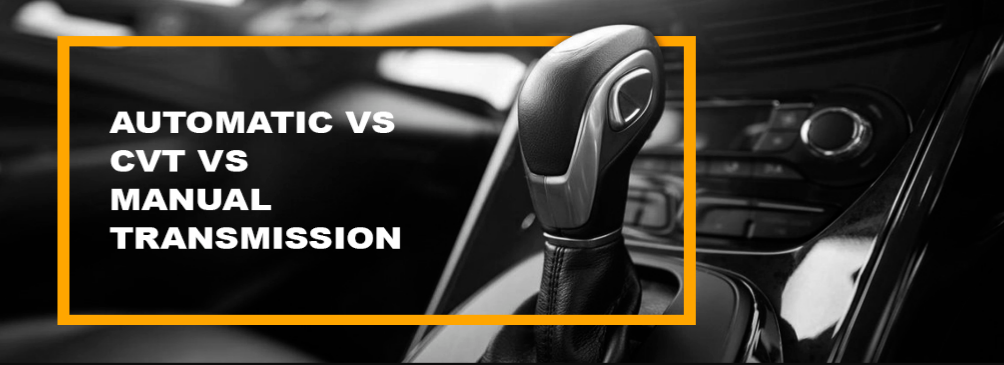
Resale Value
The resale value of a vehicle can be influenced by various factors, including the type of transmission. Historically, automatic transmissions have held a reputation for reliability, which can positively influence resale values. Their widespread acceptance and understanding in the market can make them a safe bet for potential second-hand buyers.
CVTs, due to some early reliability concerns and unfamiliarity among some segments of the car-buying public, might face challenges in resale. However, as more people become acquainted with CVTs and as manufacturers continue to improve the technology, this perception is gradually shifting. It’s worth noting that brand reputation, model popularity, and overall vehicle condition play more significant roles in determining resale value than just the type of transmission.
In summary, when assessing the economic implications of choosing between a CVT and an automatic transmission, one must look beyond the upfront costs. Considering long-term maintenance expenses and potential resale values will provide a more comprehensive understanding of the total cost of ownership. Making an informed decision involves weighing these economic considerations against personal preferences and driving needs.
Environmental Impacts
The environmental footprint of a vehicle is influenced by many factors, with the type of transmission playing a pivotal role. The decision between CVTs and automatic transmissions can have varying impacts on emissions and fuel consumption. As global concerns about climate change and air quality rise, these factors are becoming increasingly relevant to both consumers and policymakers.
Emissions Comparison
Automatic transmissions, with their fixed set of gears, sometimes can’t always match the precise power needs of the engine. As a result, engines paired with automatic transmissions might run less efficiently in certain conditions, leading to higher emissions. Advances in transmission technology, like the addition of more gears, have worked to reduce this discrepancy, but there’s still room for improvement.
CVTs, by nature, can continuously adjust to ensure the engine operates at its most efficient RPM, leading to optimal combustion and, consequently, reduced emissions. This adaptability means that vehicles equipped with CVTs can frequently produce fewer emissions in real-world driving scenarios, especially during city driving where stop-and-go patterns are common.
Fuel Consumption Patterns
Fuel consumption is intrinsically linked to emissions. An engine that consumes less fuel typically emits fewer greenhouse gases.
With automatic transmissions, fuel consumption can vary widely based on driving conditions. Highway driving, where the vehicle maintains a steady speed, can be quite efficient. In contrast, city driving, with its frequent stops and starts, can lead to higher consumption as the transmission shifts through its gears.
CVTs shine in stop-and-go traffic scenarios. Their ability to seamlessly adjust gear ratios ensures the engine operates in its sweet spot more frequently, leading to reduced fuel consumption. This is one reason many hybrid vehicles, which often operate in urban environments, utilize CVT technology.
In conclusion, while both CVTs and automatic transmissions have made strides in reducing their environmental footprints, CVTs often have a slight edge in terms of emissions and fuel efficiency in varied driving conditions. However, it’s essential to consider the entire life cycle of the vehicle, including manufacturing and disposal, when assessing its total environmental impact.
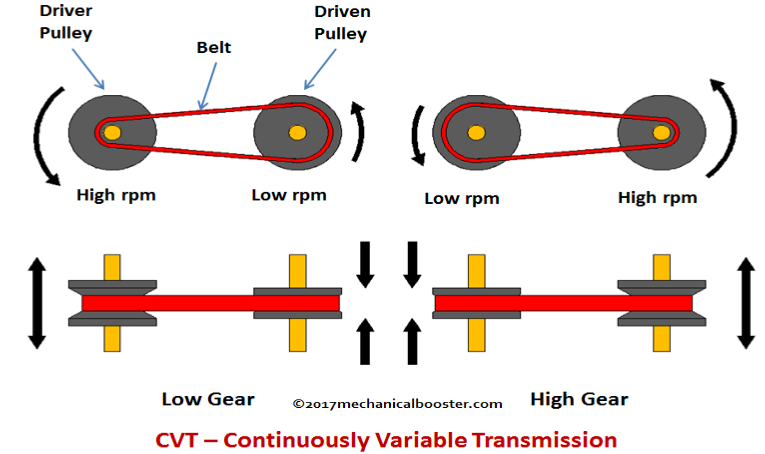
Consumer Preferences and Feedback
Transmissions might be a technical aspect of a vehicle, but their influence extends beyond mere mechanics. They affect the driving experience, which in turn, plays a crucial role in shaping consumer preferences. Through surveys, expert feedback, and market trends, one can gain insights into how CVTs and automatic transmissions fare in the eyes of the public.
Driver Satisfaction Surveys
Many automotive publications and organizations regularly conduct driver satisfaction surveys to gauge how various vehicle components, including transmissions, affect the overall driving experience. These surveys often reveal that drivers appreciate the smoothness and efficiency of CVTs, especially in city driving scenarios. However, some purists and enthusiasts occasionally miss the tactile feel of gear shifts that come with traditional automatic transmissions. It’s essential to view these surveys with a comprehensive lens, recognizing that driving preferences can vary widely among different demographics.
Feedback from Mechanics and Experts
Mechanics and automotive experts are at the frontline of understanding vehicle performance, durability, and maintenance. Their feedback on transmissions is invaluable. While CVTs have made significant strides in reliability and performance, some mechanics still raise concerns over long-term durability and the cost of repairs. On the other hand, the familiarity and well-established nature of automatic transmissions mean that many mechanics have a deep understanding of their intricacies, making diagnosis and repair more straightforward in many cases.
Experts in automotive journalism and industry research also offer insights. While they often praise the advancements in CVT technology and its benefits in fuel efficiency, there’s also acknowledgment of the traditional automatic transmission’s place in performance-oriented vehicles and its longstanding reputation.
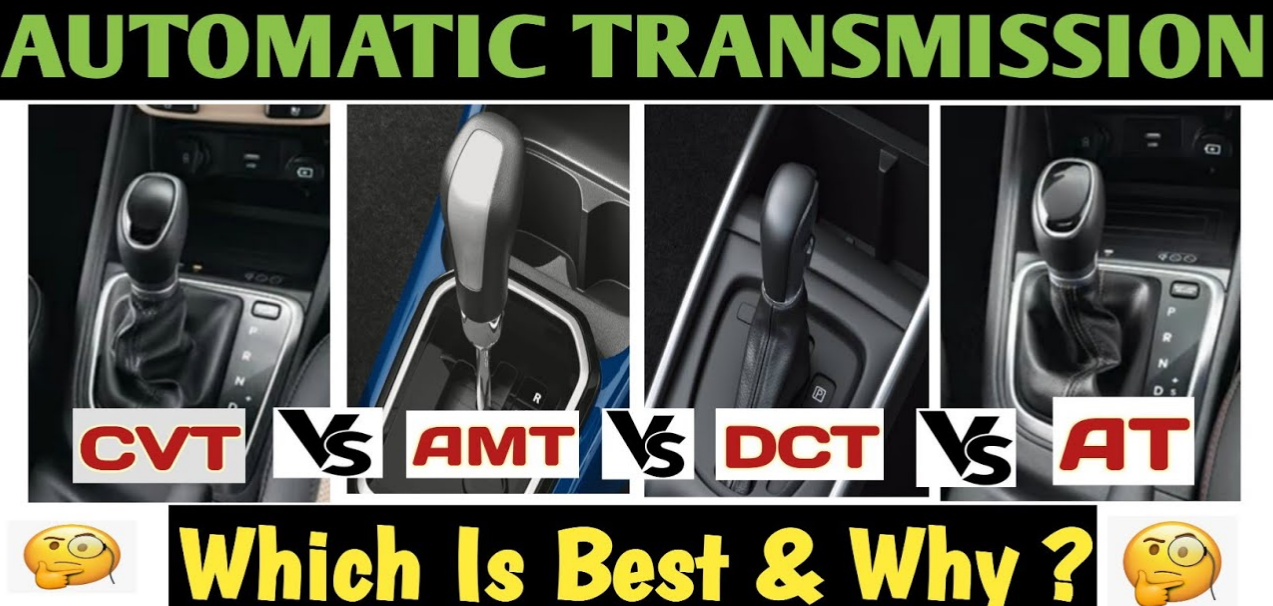
Popular Models and Market Trends
Market trends provide a window into consumer preferences on a large scale. In recent years, the adoption of CVTs has grown, especially in compact cars and hybrids, owing to their efficiency benefits. However, performance and luxury vehicles often stick with automatic or dual-clutch transmissions, catering to enthusiasts who crave a more engaged driving experience.
Some iconic models with a longstanding reputation have chosen to stick with their traditional automatic transmissions, further solidifying their place in the market. Meanwhile, many new entrants, especially in the eco-friendly segment, are opting for CVTs.
In essence, consumer preferences are shaped by a mix of practicality, emotional connection, and past experiences. Both CVTs and automatic transmissions have their strong suits and challenges. As the automotive industry evolves, feedback from consumers, mechanics, and experts will continue to shape the direction of transmission technology.
